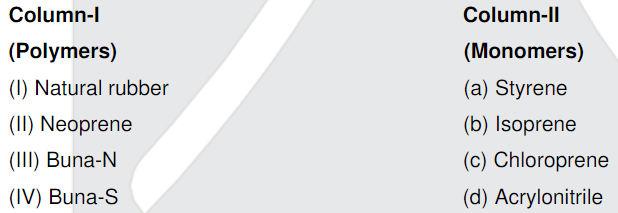In which of the following both pairs have correct combinations ?
In situ conservation : Seed Bank
Ex situ conservation: National Park
In situ conservation : Tissue culture
Ex situ conservation: Sacred groves
In situ conservation : National Park
Ex situ conservation: Botanical Garden
In situ conservation : Cryopreservation
Ex situ conservation: Wildlife Sanctuary
The correct Answer is:C
To determine which of the following pairs have correct combinations regarding in-situ and ex-situ conservation, we need to analyze each option provided.
1. Understand In-situ and Ex-situ Conservation:
- In-situ Conservation: This refers to the conservation of species in their natural habitats. Examples include national parks, wildlife sanctuaries, and natural reserves.
- Ex-situ Conservation: This involves the conservation of species outside their natural habitats. Examples include seed banks, botanical gardens, and tissue culture.
2. Evaluate Each Option:
- Option 1: In-situ Conservation - Seed Bank; In-situ Conservation - Natural Habitat.
- Analysis: Seed banks are a method of ex-situ conservation, while natural habitat is a method of in-situ conservation. This pair is incorrect.
- Option 2: In-situ Conservation - Tissue Culture; Ex-situ Conservation - Natural Habitat.
- Analysis: Tissue culture is a method of ex-situ conservation, while natural habitat is a method of in-situ conservation. This pair is incorrect.
- Option 3: In-situ Conservation - National Park; Ex-situ Conservation - Botanical Garden.
- Analysis: National parks are a method of in-situ conservation, and botanical gardens are a method of ex-situ conservation. This pair is correct.
- Option 4: In-situ Conservation - Cryopreservation; Ex-situ Conservation - Wildlife Sanctuary.
- Analysis: Cryopreservation is a method of ex-situ conservation, while wildlife sanctuaries are a method of in-situ conservation. This pair is incorrect.
3. Conclusion:
- The only option where both pairs have correct combinations is Option 3: In-situ Conservation - National Park; Ex-situ Conservation - Botanical Garden.
Final Answer:
Option 3 is the correct answer where both pairs have correct combinations.
---
- In-situ Conservation: This refers to the conservation of species in their natural habitats. Examples include national parks, wildlife sanctuaries, and natural reserves.
- Ex-situ Conservation: This involves the conservation of species outside their natural habitats. Examples include seed banks, botanical gardens, and tissue culture.
- Option 1: In-situ Conservation - Seed Bank; In-situ Conservation - Natural Habitat.
- Analysis: Seed banks are a method of ex-situ conservation, while natural habitat is a method of in-situ conservation. This pair is incorrect.
- Option 2: In-situ Conservation - Tissue Culture; Ex-situ Conservation - Natural Habitat.
- Analysis: Tissue culture is a method of ex-situ conservation, while natural habitat is a method of in-situ conservation. This pair is incorrect.
- Option 3: In-situ Conservation - National Park; Ex-situ Conservation - Botanical Garden.
- Analysis: National parks are a method of in-situ conservation, and botanical gardens are a method of ex-situ conservation. This pair is correct.
- Option 4: In-situ Conservation - Cryopreservation; Ex-situ Conservation - Wildlife Sanctuary.
- Analysis: Cryopreservation is a method of ex-situ conservation, while wildlife sanctuaries are a method of in-situ conservation. This pair is incorrect.
- The only option where both pairs have correct combinations is Option 3: In-situ Conservation - National Park; Ex-situ Conservation - Botanical Garden.
Option 3 is the correct answer where both pairs have correct combinations.
Topper's Solved these Questions
- BIODIVERSITY AND CONSERVATIONBook:PHYSICS WALLAHChapter:BIODIVERSITY AND CONSERVATIONExercise:LEVEL-2
Explore 30 Videos
- ANIMAL KINGDOMBook:PHYSICS WALLAHChapter:ANIMAL KINGDOMExercise:NEET PAST 10 YEARS QUESTIONS
Explore 45 Videos
- BIOLOGICAL CLASSIFICATIONBook:PHYSICS WALLAHChapter:BIOLOGICAL CLASSIFICATIONExercise:NEET Past 10 Years Questions
Explore 52 Videos
Similar Questions
Knowledge Check
Which of the following pairs is correct?
AMakbara of Hoshangabad - BhopalBMakbara of Nawab Hasan - ManduCMakbara of Gaus Mohammed - ShivpuriDSamadhi of Jhalkaribai - MandlaWhich of the following pairs is correct?
AMakbara of Hoshangabad - BhopalBMakbara of Nawab Hasan - ManduCMakbara of Gaus Mohammed - ShivpuriDSamadhi of Jhalkaribai - MandlaWhich of the following pairs is not correct ?
AE. Haecker−coined the term ,EcologyBTansley−Coined the term 'EcosystemCR. Mishra−Father of indian EcologyDNone of these


